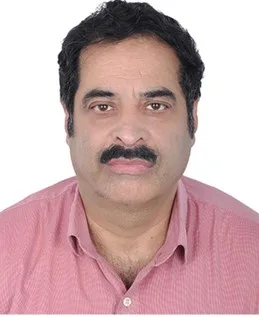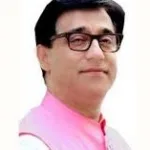Srinagar, Sept 09: Suicide is often described as a “silent epidemic.” Each year, it takes more lives globally than wars, accidents, or many major illnesses. Yet it remains hidden behind walls of stigma, silence, and shame. Families whisper about it, communities avoid it, and those in distress are left feeling voiceless and alone.
In Jammu & Kashmir, the situation is particularly concerning. The region accounts for nearly 30% of all suicides in India. Conflict, trauma, unemployment, socio-economic pressures, post-pandemic stress and untreated mental health conditions all play significant roles.
Ahead of the World Suicide Prevention Day observed on Sept 10 and as part of the National Suicide Week being observed from Sep 07 to Sep 13, Rising Kashmir Senior Correspondent Mansoor Peer, in conversation with Dr Imtiyaz Hussain Mansur (MD, DA), Visiting Consultant at Noora and Florence Hospitals Srinagar, and former Senior Consultant Psychiatry, Nodal Officer Mental Health Kashmir, and Senior Psychiatrist at Hamad Medical Corporation, Doha, Qatar, discuss and explore multiple perspectives, emphasize prevention strategies, and break the silence that keeps people suffering.
Why does suicide happen?
Suicide is never the result of just one factor. It usually arises from a complex interplay of psychological, biological, and social influences.
Mental health disorders such as depression, bipolar disorder, PTSD, schizophrenia, and substance abuse are among the strongest risk factors.
Psychological traits like hopelessness, impulsivity, and poor coping skills add to the risk.
Environmental triggers like conflict, trauma, unemployment, or relationship breakdowns often act as tipping points.
Cultural stigma, silence, and media portrayals can further complicate how people perceive their suffering and whether they seek help.
Philosophical and existential questions also shape how society interprets suicide, but at its core, it is deeply tied to mental health and human vulnerability.
Can suicide really be prevented?
Yes, many suicides are preventable. Timely intervention is the key. This may include crisis support through helplines, access to therapy and psychiatric treatment, medication where needed and strong family and community support. If we can recognise distress early and respond with compassion, countless lives can be saved.
How do we break the silence without glamorising the act?
We must speak openly, but responsibly. That means using non-judgmental, everyday language, avoiding romanticised or dramatic phrases, highlighting stories of recovery, resilience, and hope, encouraging responsible media reporting and creating safe spaces where people feel they can talk freely without fear of judgment.
Why do most people feel uncomfortable admitting to suicidal thoughts?
Because of stigma. People fear being judged, misunderstood, or rejected. Unlike saying “I have thought about suicide” is still taboo. We must normalise these conversations so that people feel safe opening up before it is too late.
Suicide is often under-reported or disguised as accidents. What does that say about our society?
It reflects our discomfort with the truth. Families often remain silent due to fear of gossip, blame, or religious condemnation. Society tends to value “saving face” more than acknowledging real suffering.
Suicide kills more young people than many epidemics. Should it be treated as a public health crisis?
Absolutely, suicide is not a virus, but it spreads its pain across families and communities. It kills more young people than malaria or even COVID-19, yet receives only a fraction of the funding or attention. Recognising suicide as a public health emergency would mobilise resources, policy, and awareness in the way we treat other epidemics.
Why do families often say ‘heart attack’ or ‘illness’ instead of suicide? What is the cost of this silence?
The cost is enormous. Hiding the truth robs the next generation of an opportunity to understand mental illness. It reinforces stigma, masks warning signs, and leaves unresolved grief. Children grow up with confusion, hidden pain, and sometimes internalised shame. Speaking openly is painful, but silence costs much more.
What about media responsibility?
The media has great power. When a celebrity dies by suicide, news spreads. While this can raise awareness, it also risks the “Werther effect” (copycat behaviour). Social media, especially, tends to sensationalise tragedies. Responsible reporting, like avoiding graphic details, emphasising hope and recovery, can make the difference between triggering despair and encouraging help-seeking.
Should survivors of suicide attempts have a greater role in prevention?
Yes, survivors are often the most powerful advocates. Their testimonies bring authenticity, urgency, and humanity to discussions that otherwise remain abstract. Listening to their voices helps reduce stigma and shape policies that address real needs, not just statistics.
Some see suicide as an act of autonomy. Does framing it as an illness silence the person’s voice?
This is a deeply philosophical debate. But research shows that most suicides are linked to treatable mental health conditions. What may appear as an “autonomous decision” is often clouded by despair, hopelessness, or impaired judgment. Recognising the illness does not erase autonomy; it highlights that help could have changed the outcome.
Is suicide more psychiatric, or social and cultural?
Studies suggest 60–90% of suicides are linked to mental illness. That means the majority are treatable and preventable. But social, cultural, and existential suffering must not be ignored. Poverty, isolation, discrimination, and conflict all add heavy burdens that can push people toward the edge.
What warning signs are often missed?
Often-missed warning signs—such as sudden calmness after distress, giving away prized possessions, talking about being a burden, withdrawal from relationships, changes in sleep patterns, and expressing despair through poetry, art, or metaphor—must be recognised by families and professionals before it’s too late.
Is suicide still penalised in India?
A: Under IPC 309, attempted suicide remains a criminal offence punishable by up to one year in jail. However, the Mental Healthcare Act (2017) has effectively decriminalised it in cases linked to mental illness or severe stress. This is a step forward, but stigma remains a greater barrier than law.
Can schools, workplaces, and digital spaces be protective environments?
Yes. They can play a huge role by embedding life-skills education, training teachers and managers to recognise distress, providing counsellors and safe spaces, fighting bullying, burnout, and job insecurity and using AI and digital tools for early crisis detection
How effective are helplines compared to in-person support?
Helplines are often the first lifeline. They provide immediate, anonymous, and safe access to support, especially for those in remote areas. In Kashmir, several helplines exist, including the government-backed TELE-MANAS, which operates 24/7 in local languages. For many, that first phone call can be the difference between life and death. Hope is real. Prevention is possible. Suicide is not inevitable.






